
AMOSC
Organic Food Distributors
Dill
Dill is one of the most popular herbs used in cooking, it has tender and juicy green color with light anise flavor and spicy aroma. Useful attributes of the dill are known since ancient times, its decoction is used to boost digestion for adults and children. Aroma of the dired dill is much more intense than that of the fresh one, so dosing should be accurate to avoid strong “drugstore” odor.
Dried dill is used as a spice for soups, boiled potatoes, fish and seafood, meats, mushrooms, cheese and all sorts of vegetables. It is a part of spice selections for cooking pizzas, baked potatoes and mushroom varieties. The chemical contents of dill includes the following: carotene; choline; A, B1 B2 B5, B6, B9, B12, C, D, E, K and PP vitamins, and also minerals essential for human body – potassium, calcium, magnesium, zinc, selenium, copper and manganese, iron, phosphorus and sodium.
Beet
Dried beet is used to help cleanse body to get rid of scum and toxins, and also as an appetizer and a mood-booster. Drying agents contained in beet have flavonoids, which help relieve vascular spasms, build capillary strength, drive down blood pressure and improve blood quality. These fiavonoids also help fight cancer and radiation. Betaine and betanin, contained in beet, which are alkaloid compounds not met elsewhere, assist in food digestion nd participate in choline synthesis, which improves liver functions. Dried beet especially rich in vitamins B1, 32, BS, C, carotenoids, amino acids. salts of iron, manganese, potassium, calcium, cobalt, magnesium and iodine..
Broccoli
Broccoli Dried is a real storehouse of vitamins and minerals. By nourishing properties broccoli proteins can be compared to proteins of meat - such as beef or chicken egg protein. In addition to the high content of vitamin C, folic acid, potassium, Beta-carotene and fiber, broccoli has antioxidants and other substances that reduce the risk of cardiovascular disease and cancer.
Broccoli has healing properties, which are due to high content of useful and active agents - each component per forms its function in the organism and in the process of interaction with each other, these substances are able to improve and restore health.
Broccoli is an excellent supplier of vitamins C, PP, K, U,and beta-carotene. ascorbic acid (vitamin C) in the broccoli is almost 2.5 times higher than those recognized suppliers of the vitamin, like citrus.
Cabbage
Dried cabbage is very useful despite thermal processing. It can be consumed even by diabetes-ill people, because it contains neither starch nor saccharose.
Eating dried cabbage helps normalize digestion and remove cholesterol and toxins. It is widely known in cooking as many women use dried cabbage in everyday cooking. It should be thoroughly boiled for about 20 minutes.
Dried cabbage has plenty of vitamin C, and also E, PP, H, B vitamins and carotene. It is also rich in phosphorus, magnesium and potassium.
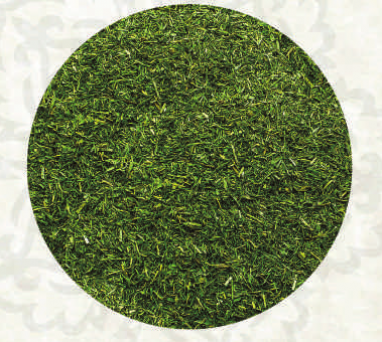

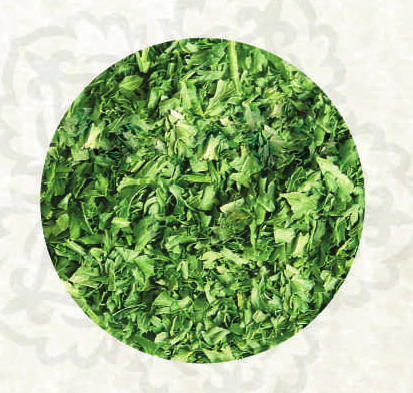

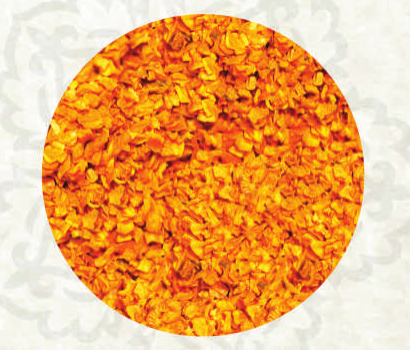
Carrot
Thanks to its numerous dignities, carrot should have been sold in drugstores instead of groceries. Carrot is extremely rich in carotene, and fiber, potassium, iron, phosphorus, C vitamin and folic acid.
Dried carrot is very useful for 1%.. eyesight. because it strengthens retina, helps fight myopia and rapid eye-strain, and soothes digestive and nervous system. If carrot is eaten on a regular basis. its vitamins and minerals increase body energy, build up immune system, and stimulate regeneration processes in body.
Dried carrot contains: sugars (up to 15%), oils (O.1-0.7%), nitrogenous substances, mineral salts. asparagine, umbelliferone, fiavonoids (up to 0.3%), a number of enzymes ( amylase, invertase, protease. lipase. peroxidase, catalase ) Pigments - Various carotenoids, phytoene, phytofluene, lycopene, and various vitamins.
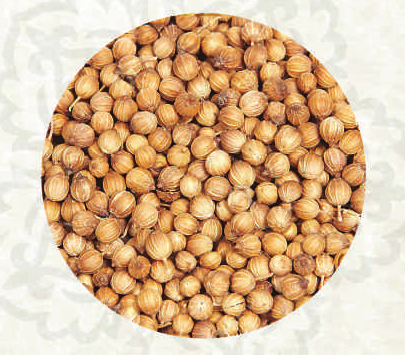
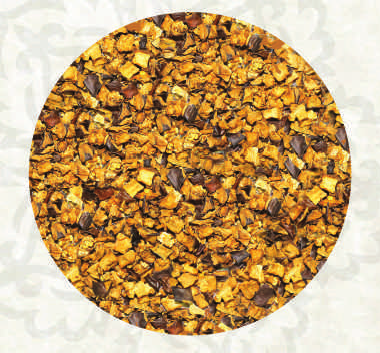
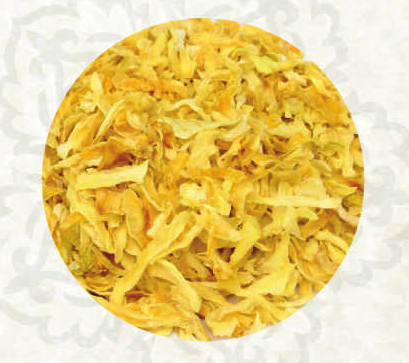

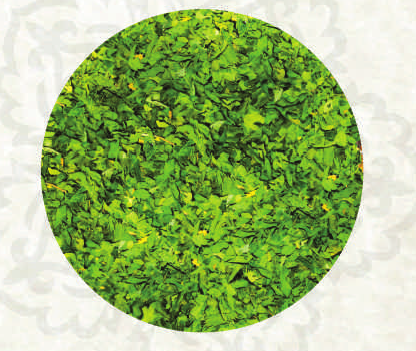
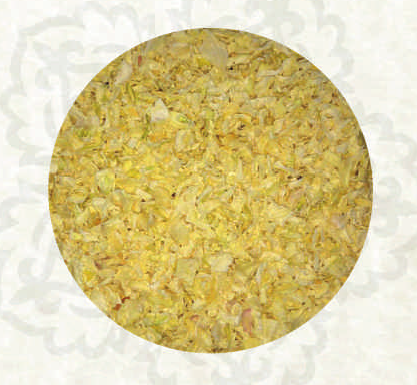


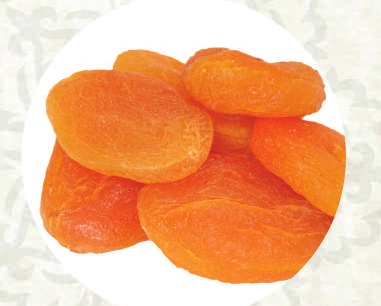

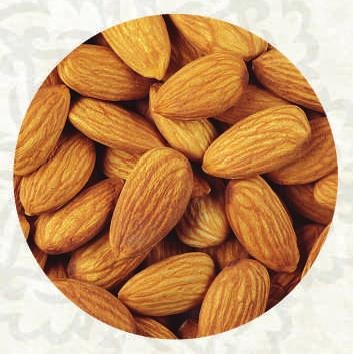
Coriander
Coriander is excellent flavoring for a variety of culinary dishes and sauces. The irreplaceable flavor of the coriander is amazingly able to complement a variety of foods, giving it a special piquancy. The use of coriander is widely known . Coriander seeds stimulate the digestive system, increasing appetite and helping to digest food better, have a carminative and diaphoretic properties. Essential oil of its seeds have a strong antibacterial and anthelminthic action. Coriander strengthens the liver with lethargy and stagnation in it, and improves appetite. Coriander contains organic acids, minerals and a variety of vitamins (A, PP, B1, B2, C) it has calcium, magnesium, sodium, copper, selenium, potassium,phosphorus, zinc, iron, iodine. Significantly, these useful substances consisting coriander balanced so that perfectly absorbed in the human body.
Eggplant
Dried eggplant — is a great basis for snacks, and is one of the main ingredients
in Chinese, Korean and Japanese cuisines. It can be used in salads and sauces,
and also as a substitute for bacon in classical sandwiches (lettuce plus bacon
plus tomatoes). It is a very convenient ingredient for vegetarians. Dried eggplants can be sliced as strips or as cubes. Finished 4 product has 7-8% moisture level. There are 3 classes of the products based on quality —
higher, first, and second classes and based on appearance. Dried eggplants contain sugar, protein. cellulose. pectin, nicotinic acid and ascorbic acid,thiamine, carotene, riboflavin, potassium salts and tannin etc.
Eggplants are rich in salts of manganese, cobalt, iron. zinc, copper, therefore they very are useful during anemia.
Onion
Onion increases energy and secretion of the gastrointestinal tract, it has anti-bacterial attributes, and is also used as diuretic and antiscorbutic agent. Ethanol extract of onion stimulates cardiac activity. There are anti-sclerosis attributes, although not proven. Onion helps during vitamins deficiency and metabolic disorders.
Onion essential oil kills many pathogenic germs. Due to this, it is recommended to increase consumption of onion at infections season. It can prevent development of influenza.
Onion contains essential oil rich in sulfur; sugars — glucose, fructose, sucrose, maltose (up to 11%), inulin, phytin , nitrogenous substances (up to 2.5%), C vitamins (up to 10 mg), B1 vitamin (up to 60 mg), A pro-vitamin
(carotene), flavonoids (quercetin and its glycosides), and traces of iodine.
Paprika
Paprika is dried fruits (actually - berries ) of slightly hot sweet pepper. As a rule, paprika is colored red, but ometimes is can be of green color. The pods of ripe pepper are dried, then grains and core are extracted, and after that are grinded. Paprika is sold both as a fine powder and as sliced pieces. The flavor is usually slight sweet, and moderately hot. Many cuisines, including Hungarian, Bulgarian, Mexican and others cannot be imagined without dried paprika. It is noted that paprika-eaters look younger, feel better and are less prone to stomach problems.
The chemical contents of dried paprika includes the following: carotene; rutin; A, B1, B 2, B5, BS, B9, C, E, and PP vitamins, and also minerals essential for human body - potassium, calcium, magnesium, zinc, selenium, copper and manganese, iron, supfur, phosphorus and sodium.
Parsley
Parsley is on the most famous and favorite spices, its tender green color pleases us since early spring until late autumn. Spicy and nutty flavor of parsley, with a pleasant light taste of bitterness is an ideal complement to fresh and cooked vegetables, its bright color decorates snacks and main dishes.
Dried parsley can fully substitute fresh one in soups, stewed meat and vegetable disheds and is an integral part of seasoing for fish and mushrooms. It will not dissolve in the taste of salads, but will reveal its flavor and add its bit of taste to winter-season vegetables.
The chemical contents of parsley includes the following: beta-carotene; choline: A, B1, B2, B5, B6 B9, B12, C, D, E, K and PP vitamins, and also minerals essential for human body – potassium, calcium, magnesium, zinc, selenium, copper and manganese, iron and molybdenum.
Potato
The high value of the dried potato is a high protein content; it has alkalizing effect on the human organism. Frequent consumption of potatoes is represented positively in diseases that associated with metabolic disorders.
Dried Potato help to counteract the excess of the acid in the organism, which are formed during the metabolism. As is known, excess of the acid in the organism contributes to premature aging.
Dried Potatoes contain vitamins - E, D, P and vitamins of group B. It has a lot of minerals. Among them, potassium salts, magnesium, iron, calcium, phosphorus and chromium.
Raisins
Raisins made of red and yellow types of grapes, is known for its useful properties.
It is known for its ability to strengthen the nervous system as well as a depressant. Dried grapes have beneficial effect on condition of heart and lungs.
Raisin is a supplier of iron to the body, improves ability of erythrocytes to bind with oxygen in the blood. The nutritional value of this product in addition to the almost complete absence of fats makes it popular among people dealing with mental work.
Raisin strengthens the cardiovascular system, improves immunity, normalizes the nervous system. It is also recommended as a remedy against anaemia, source of iron.
The product contains 79.5-87.5% of sugars, 2.1-2.9% of nitrogenous substances, 0.7 -2.3% of acids, 1.3% of cellulose, 2-2,9% pf ash, 16-22% of moisture, vitamins B1, B2, and B5, microelements (iron, boron, magnesium, etc.).
Prune
Prunes are one of the most useful dried fruit, which has excellent taste. Prune has a therapeutic and healing effect to the organism. The composition of prunes includes a large number of minerals, vitamins and many vital substances for the body.
Prunes are useful for the treatment of the early stages of cardio - vascular diseases.
Useful properties of prunes contribute to normalization of the pressure in hypertension, regulate the gastrointestinal tract, normalize metabolism, help get rid of excess weight.
Prunes ha tonic properties, restores the reduced efficiency, improves the general condition of the organism. Also, prunes has good cosmetic properties, so is able to improve the appearance and condition of the skin.
Dried prunes is rich of sugar (57.8%), organic acids (3.5%), fiber (1.6%), minerals - sodium 104 mg therein, potassium - 864 mg, calcium - 80 mg, phosphorus - 83 mg, iron - 15 mg.It has a high energy value (231 kcal).
Apricot
Dried apricot is useful product. Eating dried apricots in food is recommended for diseases such as anemia, impaired vision, heart disease, and as a tonic. Dried apricots help to riddance clogging of blood vessels and solid tumors softens and rejuvenates the skin and strengthens hair. Contained in dried apricots, vegetable fibers help to cleanse the intestines.
Dried apricots have dietary properties, which are due to the predominance of potassium over sodium salts. The high content of magnesium can recommend apricots to treat hypertension and certain forms of anemia.
Dried apricot boasts a high content of mineral substances, including potassium, magnesium, calcium, iron and phosphorus, in the dried apricots significantly greater than in fresh apricots. Dried apricots have a lot of vitamin B5, organic acids and pectin, effectively putting out of the human body of heavy metals and radionuclides. Sweetness of the dried apricots due to the high content of glucose, fructose and sucrose.
Beans
Beans are annual grassy bushy or climbing plants of the legume family. Its Motherland is Central and South America. In France the beans were used as an ornamental plant decorating windows of houses by pale pink, lilac, cream and white flowers.
The pods from 6 up to 20 cm in length contain diverse in size and color kidney-shaped seeds which have an enormous quantity of nutrients.
The beans are used to cook soups, garnishes, salads, pies and etc.
The beans are recommended for prevention of atherosclerosis, kidney stones, hypertension, pyelonephritis, cardiac function dysrhythmia. The product improves immunity to enteric infections and even to influenza.
Beans contains up to 25% of protein, which by its nutritional value surpasses many sorts of meats and is digested by 70-80%. It contains also potassium, calcium, sulfur, magnesium, phosphorus, iron, vitamins B1, B2, B3, B6, C, E, K and PP as well as essential amino acids.
Nutritionists recommend eating beans at least 1-2 times a week and qualify them to be dietary and remedial products.
Almond
Almonds are a bush or a small tree referred to subgenus of almond (Amygdalus), genus of plum. It is often considered to be a nut but in actual fact it's a drupaceous fruit. Almonds look like peach stone as per its size and shape.
Almond seeds contain from 35 to 67% of non-drying fatty oil. This is one of the best plant sources of protein: the value is almost the same as the meat has - up to 30%. Almond ensures a high-quality, well absorbed protein. It contains a great quantity of necessary or essential amino acids, easy to digest.
The product contains the minerals necessary for healthy bones. Calcium, magnesium, manganese and phosphorus participate in maintaining their strength. Almond seeds have a large quantity of fatty oil, proteins and sugars; there are also enzymes, vitamins of B and E group.
Glycoside amygdalin has been found in the bitter almond which provides the bitter taste to the kernels and "almond flavor”.
The product has a positive effect on blood lipids, especially on content of powerful antioxidant - vitamin E. Almonds are a good alternative to the animal origin proteins. It is used in folk medicine in case of digestive disorders and kidney failure.
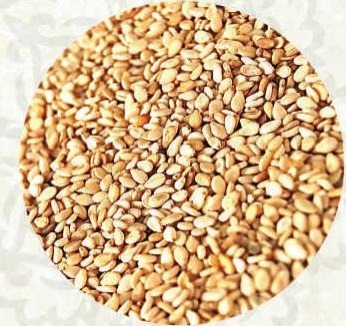
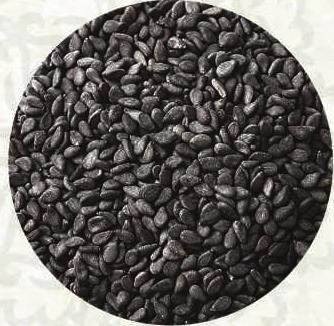
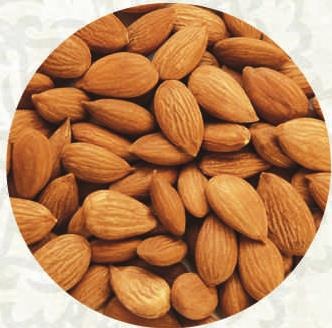
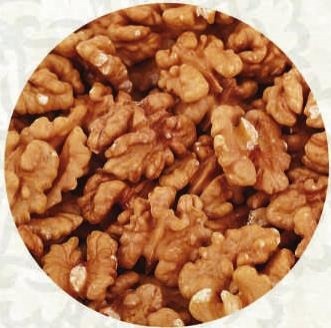
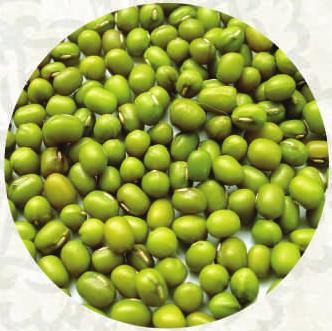
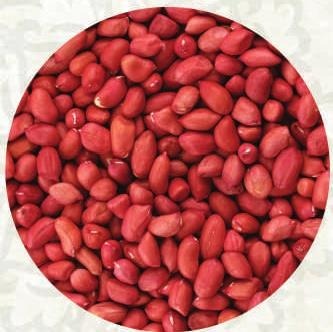

Sesame
Sesame (from Latin Sesamummeansoil plant)-one-year and perennial plant in pods of which the sesame are ripened. There are several types of sesame seeds: white, yellow, brown and black. But more often two main types can be found: white and black. White one is used while cooking meals which are exposed to the heat treatment and black one is just the opposite way. This type is more flavoured.
The humans use sesame seeds humanity getting a long while ago. It was used for curative purposes in Ancient Greece, Rome, Babylon and China. The sesame oil was mentioned in the ancient cultural heritage of many countries, as well as in Holy Scripture. The first person who described useful properties of sesame seeds and sesame oil was Ibn Sina (Avicenna) who created a huge paper on medical treatment in the XI century.
Now sesame seeds for export are grown in the South Caucasus, Central Asia, in the Far East and India.Sesame seeds are referred to the oil-bearing plants. They contain almost 60% of the volume of vegetable fats of a seed such as linoleic, oleic, palmitic, myristic, arachidic, stearic and lignoceric acids. Sesame seeds are also rich in vitamin-minerals. There are such vitamins as A, C, E and B groups; minerals such as magnesium, zinc, phosphorus, iron, but more rich in calcium. 100 g. of the sesame contain 783 mg of calcium, which represents a daily dose for an adult. In addition the seeds have organic acids such as beta-sitosterol, phytin and lecithin. Sesame has a high calorific value due to its high content of fats and proteins. There are 560 calories in 100 grams of Sesame Seeds. And there are 884 calories in 100 grams of Sesame oil. This product may cause obesity, for that reason overweight people as well as those who keep their figure shall take it carefully.
Black Sesame
Sesame is known for its properties for a long time. Many legends refer to it, so it is not surprise that now it is widely used. But there are those who knows absolutely nothing about this product. This gap should be filled.
Sesame is an annual plant. Its fruits look like an elongated capsule, inside of which there are the seeds of different colors. Sesame seeds used in the culinary art, and also as a medicine. The sesame seed oil is especially worth. The Sesame is grown specifically to be used in the cookery but it is used also in cosmetics, medicine and cooking.
Sesame Indian or common is represented by brown seeds sesame. It is especially popular on the East and the Middle East. This is the same Sesame which we know very well. It is used in the cookery, candy manufacture, the sesame oil are made of it. First of all the calorific capacity of seeds makes about 580 calories. Half of the composition is an oil, which consists of polyunsaturated and saturated organic acids.
In addition, the sesame seeds contain Sesamine, which is an antioxidant. Its peculiarity is that it is used for prevention of diseases, including cancer. It also reduces cholesterol in the blood by using the beta-sitosterol.
Black Sesame is unrefined sesame seeds. It is noted for a more strong aroma and taste. It is used mainly in the Far East, especially in China. Black Sesame contains more than 60% of calcium in comparison with the common one.
Apricot Seeds
Apricot is one of the most popular fruit reaped in the summer. It is notable for a sweet taste. Many people are not aware that apricot stones can be also eaten. Moreover, they have a number of beneficial properties.
The oil contained in the kernel is the basis for many medicines. Upon doing
brown the apricot's kernel is tasty, nutritious and healthy. In addition, this is a natural vermifuge. Prepared as a tea, apricot stones helps during treatment of cardiovascular diseases. A safe quantity for an adult - not more than twenty apricot's kernels a day.
They are beneficial owing to its ability to resist cancer cells. This property is provided by the presence of vitamin B17 in the apricot kernels. It gives a bitter taste of kernels: more it's bitter, more quantity it has.
The calorific capacity of the apricot makes 440 kcal per 100 g of the product.
Walnut
Walnut is a tree of walnut family from 4 to 25 m and more in height. The trunk diameter reaches 1.5 m. The crown is dense and well-rounded.
The leaves are large (length makes 20-40 cm), odd-pinnate and complicated, deciduous during the winter period, fragrant (from essential oils).
The flowers are small, greenish and monoecious. The staminate flowers are picked by hanging earrings, the pistillate ones are located on the top of annual branches, isolated or in groups.
The fruits have a thick fibrous coat and strong stone. Upon occurrence of maturity thefruit's peel dries up and breaks into two parts and is removed itself, the stone is not opened.
Mature nuts are the food and high-activity medicine. They are twice calorific than wheat bread of premium quality.
They are used for prevention of atherosclerosis, in case of lack of vitamins, salts of cobalt and iron in the body. The nuts have a lot of fiber and oil that enhance intestinal activity. Therefore, they are recommend for older people who are prone to constipation.
Nutritious and high-calorie product is distinguished by a high oil content. There are 654 kcal in 100 g of walnuts. In case of intemperate consumption the nuts may cause obesity. They are contraindicated for people with overweight.
Enter your text here
Chickasano Peas
Chickasano pea(moong dal, golden gram) is a plant of the legume family, genus of Vigna. It is considered to be the most ancient legume, which began the conquest of the world from India, Pakistan and Bangladesh. Now the golden gram is known in many countries, it is particularly often used in national Asian cuisine. In general it is used for the first and second dishes. The flour made of golden gram is used to cook pancake, pasta, noodles, cream, ice cream and even beverages.
The golden gram is a valuable source of protein. 100 g of the product contain 23 g of protein, and it is almost completely digested. The golden gram contains vegetable fats, they are not many (only 2%), but they are polyunsaturated. They protect the heart and blood vessels, have a positive effect on metabolism. The golden gram is rich in carbohydrates (44 grams per 100 g of the product). But it's "slow" carbohydrates, which provide a feeling to be full and prevent from taking unnecessary snacks on foot.
Golden beans contain calcium and magnesium, phosphorus and potassium, sodium, and selenium, iron and copper.
The golden gram is rich in vitamins of B group and contains fiber. It's really healthy and sufficiently nutritious product.
Enter your text here
Peanuts
Peanuts (or most commonly known as ground nut) has firmly established itself in life of everyone. In actual fact this product has no respect to nuts. It belongs to the legume family and is used by humans since ancient times.
Its composition is unique. There is a huge amount of natural antioxidants which actively fight the virus and protect the body against the harmful effects of free radicals. In addition, nutritious peanut have 12 essential and 8 nonessential amino acids.
Peanuts have many substances essential for building cells. Such as potassium, phosphorus, magnesium, calcium, iron, copper, potassium, sodium, zinc and etc. The three leaders include magnesium (46% of the daily allowance), phosphorus (44%) and potassium (26%).
There are almost 600 kcal in 100 g of peanuts. Therefore, the valuable product is capable to easily saturate the body not only with energy, but also with vitamins. In addition, the peanuts have no absolutely cholesterol. 100 g of this product allow to cover a daily value of beneficial agents.
Peanuts is rich in vitamins of groups В, С, PP, Е, D. Apart from benefits, peanuts may cause allergies to some people.
Chickpeas
Chickpea is an annual herbaceous plant. The stem is hollow, with clinging tendrils of different length. The stem's color varies from light green to dark-green. Most varieties of vegetable pea have white flowers, bisexual, self-pollinating. The fruit of pea is a bean which is often called the pod.
Chickpeas are widely cultivated in Ancient India and Ancient China, where it was a symbol of fertility and wealth. In Ancient Greece and Ancient Rome, it served as main food of poor people, and in France in the XVI century the peas with fried lard was served both at the King's table and at common people's table.
The chickpeas are the richest source of protein among vegetable crops. Pea proteins are similar to the meat's proteins because it contains a number of essential amino acids (cystine, lysine, tryptophan, methionine). Also there is Ascorbic acid (up to 59%), various sugars (more than 7%), starch (1-3%), vitamins C, PP, B groups, provitamin A, carotene and fiber.
The nutritional value of peas is 1.5-2 times higher than potatoes and other vegetables. In addition, peas are rich in salts of potassium, calcium, phosphorus and iron. There are also magnesium, copper, zinc, manganese and cobalt.
Low in calories, dietetic product contains 55 kcal per 100 g, when cooked peas contain 60 calories. When dried there is a high content of carbohydrates, its caloric value is 298 kcal per 100 g. For that reason the people prone to obesity are not recommended to eat peas in large quantities.

